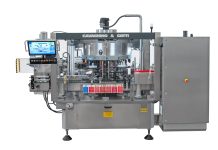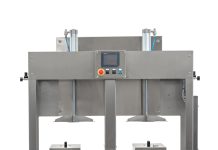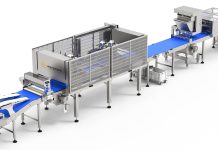 For cereals intended to pasta and baked products, it is very important to try preventing contamination of ears of wheat in fields and caryopsis in warehouses or silos because once they are formed, mycotoxins are very difficult to remove or destroy.
For cereals intended to pasta and baked products, it is very important to try preventing contamination of ears of wheat in fields and caryopsis in warehouses or silos because once they are formed, mycotoxins are very difficult to remove or destroy.
Mycotoxins are natural toxic substances, produced by secondary metabolism of certain moulds, especially of Aspergillus, Penicillium and Fusarium genus. The foods that are more frequently contaminated by mycotoxins, as can be easily seen by consulting RASFF portal (european Rapid Alert System for Food and Feed), are dried fruit (pistachios, almonds, peanuts, figs etc), cereals (corn, wheat, rye, barley, etc., and their flour-based products) and other foods such as cocoa, coffee, grape and wine, etc. To date tens of Mycotoxins are known, and only some of them have legislative references. Some important problems that occur during laboratory testing to determine their presence are the following:
 1. the development of mycotoxinogenic moulds in foodstuffs is point, with highly contaminated areas and not (for example in a tanker ship carrying cereal grains, mold growth will be concentrated in certain areas), so it is very difficult to make a representative sampling;
1. the development of mycotoxinogenic moulds in foodstuffs is point, with highly contaminated areas and not (for example in a tanker ship carrying cereal grains, mold growth will be concentrated in certain areas), so it is very difficult to make a representative sampling;
2. being extremely toxic substances, some of them have very low legal limits (on the order of a few ppb or µg/kg), whereby very effective and sensitive extraction and instrumental methods are needed to analyze them;
3. many mycotoxins have the ability to bind with the food components, coming back in free form during digestion to perform their toxic effect on human organism; because of this they may result to be “disguised” and therefore potentially underestimated during analysis. Acute toxic effects, both in animals and in humans, occur only in case of rather high quantities; more often there are chronic effects, including carcinogenesis. The amount of toxins present in foodstuffs depends on many factors, as fungal development is linked to the occurrence of favorable conditions of time, temperature and humidity. Concerning the contamination of cereals, in some geographical areas or in some vintage years, characterized by high humidity, there is a substantial development of molds resulting in high levels of mycotoxins in crops. For example in Europe some vintage years have up to 40-50% contaminated crops. In previous decades (for example the 90’s) sometimes these percentages were even higher, with positivity that reached 80-90% of tested samples for some particularly diffused mycotoxins in sensitive cereals (for example deoxynivalenol mycotoxin is the most common on wheat, in Europe and in Italy)(1). The understanding and prevention of the mechanisms that lead to the development of mycotoxinogenic molds, resulting in improved agronomic practices and grain storage, have enabled to decrease positivity over the years, even if some particularly critical vintages were still present. Toxic effects on livestock may be the most varied, and can cause substantial economic damage to breeders, but generally the consumption of animal products (meat, milk and eggs) from cattle that have been contaminated by mycotoxins does not bring any risk to human health. A notable exception is represented by aflatoxins M1 and M2 potentially present in milk, metabolites of aflatoxins B1 and B2: these metabolites, despite having crossed the animal organism, are still equipped with significant toxicity (probably higher than precursors). The following table (2) includes the most relevant mycotoxins both from a toxicological point of view and for their prevalence in food, along with each toxic effects.
 Concerning cereals intended to pasta and baked products, it is very important to try preventing the contamination of ears of wheat in fields and caryopsis in warehouses or silos, because once they are formed, mycotoxins are very difficult to remove or destroy. As a matter of fact these substances are very stable and resistant, little sensitive to heat and chemicals. For example, considering durum wheat that had 0.744 ppm contamination of deoxynivalenol in the field, it was found that after harvesting (with consequent elimination of the most contaminated parts of the ears of wheat) caryopsis still maintained 0.577 ppm contamination, which after milling was thus distributed: 0.568 ppm in wheat bran and 0.354 ppm in durum wheat flour (3). Considering the air diffusion mode, typical of fungal conidia and the growth mode of fungal hyphae, the surface layers of caryopsis seemed to be more contaminated than their inside part. This causes baked products rich in bran or whole wheat flour-based to be potentially more contaminated, while representing a healthier option than baked products made with “white” flour, from other points of view (e.g. wealth of fibers). As for kneading and baking of dough or bakery, unfortunately there is a bland effect on the reduction of mycotoxin contamination present in the flour, as evidenced by the following chart for deoxynivalenol (DON) in pasta (4): only 11% decrease passing from semolina flour to spaghetti, and further 35% after cooking the pasta.
Concerning cereals intended to pasta and baked products, it is very important to try preventing the contamination of ears of wheat in fields and caryopsis in warehouses or silos, because once they are formed, mycotoxins are very difficult to remove or destroy. As a matter of fact these substances are very stable and resistant, little sensitive to heat and chemicals. For example, considering durum wheat that had 0.744 ppm contamination of deoxynivalenol in the field, it was found that after harvesting (with consequent elimination of the most contaminated parts of the ears of wheat) caryopsis still maintained 0.577 ppm contamination, which after milling was thus distributed: 0.568 ppm in wheat bran and 0.354 ppm in durum wheat flour (3). Considering the air diffusion mode, typical of fungal conidia and the growth mode of fungal hyphae, the surface layers of caryopsis seemed to be more contaminated than their inside part. This causes baked products rich in bran or whole wheat flour-based to be potentially more contaminated, while representing a healthier option than baked products made with “white” flour, from other points of view (e.g. wealth of fibers). As for kneading and baking of dough or bakery, unfortunately there is a bland effect on the reduction of mycotoxin contamination present in the flour, as evidenced by the following chart for deoxynivalenol (DON) in pasta (4): only 11% decrease passing from semolina flour to spaghetti, and further 35% after cooking the pasta.  This shows that this mycotoxin is little degraded by the heat of pasta boiling, but it is also hardly removable, always due to boiling water, to the food matrix. Similar results were observed, always by the same authors, also in the case of wheat flour, with a mild decrease in contamination passing from clean caryopsis to flour (milling), and the acknowledgement that contamination accumulates once more in the products arising from the outer layers of the seed, such as bran.
This shows that this mycotoxin is little degraded by the heat of pasta boiling, but it is also hardly removable, always due to boiling water, to the food matrix. Similar results were observed, always by the same authors, also in the case of wheat flour, with a mild decrease in contamination passing from clean caryopsis to flour (milling), and the acknowledgement that contamination accumulates once more in the products arising from the outer layers of the seed, such as bran.
References
- Campagna C. et al. Fonti di rischio e gestione delle micotossine nel frumento. Inf. Agr. 1/2005
- Pancaldi D. and Alberti I., Seminar “Le micotossine: nuovi scenari nella filiera cerealicola ed agroalimentare”. Dipartimento di Protezione e Valorizzazione Agro-Alimentare, Università degli Studi di Bologna, June 2008
- Pancaldi D. et al. Control of Fusarium head blight and accumulation of deoxynivalenol in durum wheat grain, semolina and bran. Phytopathologia Mediterranea, 2004, 43:351-359
- Campagna C. et al. Fonti di rischio e gestione delle micotossine nel frumento. Inf. Agr. 1/2005



